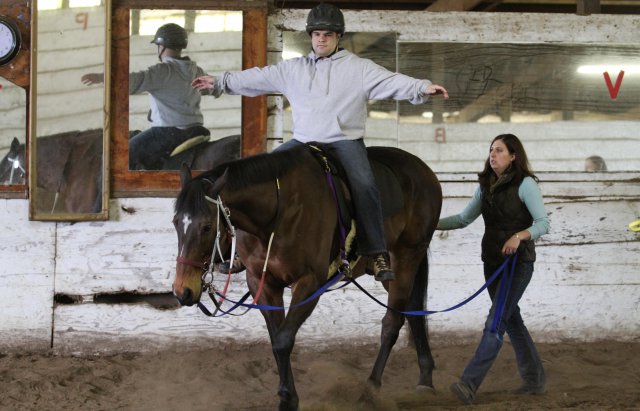
Horse riding after a stroke
In case of a stroke (especially in the last phase of the rehabilitation) training is done on a functional level and in a challenging environment. Little research has been done into the use of horses and horse riding in this specific patient group. The aim of this study was to discover whether the use of horses can be an added value in patients who rehabilitate after a stroke.
One-on-one interviews were held with 18 participants. In these conversations, four subtopics emerged: 'man-horse interaction', 'transformative experiences', 'togetherness and unity', and the 'all-in-one experience' with the horse central.
Not only horse riding, but the care around the horse was also included. Patients progressed in every area. The brushing and saddling of the horses caused an increase in fine motor skills. The riding itself and getting on the horse caused an improvement in gross motor skills and in the balance. The fact that they learned new things made the patients more self-confident. The learning capacity increased whilst dealing with horses and riding. The people around the patients told that the horse helped in the recovery and rehabilitation.
The fact that there were several people with the same problems helped the patients in the rehabilitation. The patients supported each other and the grouptherapy helped to get even further in their recovery process.
This research showed very clearly that horseback riding, working with horses and the group feeling that horseback riding entails has enormous added value in the final phase of rehabilitation after a stroke. Apart from driving, contact with other riders was also seen as a good addition to therapy. The article states that it may also be a solution to the loneliness that many patients experience after a stroke.
Do you know people who have had a stroke?
Expert opinion by Sophie Delemarre
I work as a physiotherapist myself, and I think that horseriding can certainly be a very good addition to the functional therapy!
> From: Pohl et al., PLoS ONE 13(9) (2018) 1-18. All rights reserved to Creative Commons Attribution-NonCommercial-NoDerivs 3.0 License (http://www.creativecommons.org/licenses/by-nc-nd/3.0/). Click here for the online summary.


